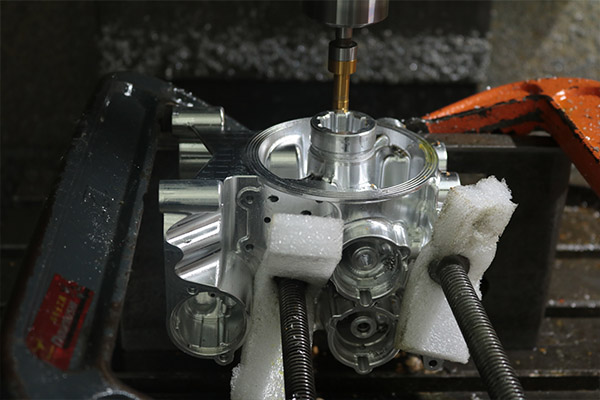Get in touch.
Dear,I will reply in 12 hours. All your message are protected!
Rapid Prototyping Services, Professional manufacturer of CNC Prototyping and 3D Prototyping in China.
CNC (Computer Numerical Control) machining is a versatile manufacturing process used to create complex components with precision. When it comes to machining inclined surfaces, proper techniques and strategies are essential to achieve accurate results. In this article, we will explore various techniques and best practices for CNC machining of inclined surfaces, providing insights to optimize your machining process and ensure precise and efficient results.

1.CAD Model or Technical Drawing:
Start with a well-defined CAD (Computer-Aided Design) model or technical drawing that accurately represents the inclined surface to be machined. Ensure that the dimensions, angles, and tolerances are clearly specified. This serves as the foundation for programming and machining the inclined surface accurately.
2.Tool Selection:
Choose appropriate cutting tools for machining inclined surfaces in CNC. Consider the angle of the surface and the material being machined when selecting the tool geometry and dimensions. End mills with suitable flute count and helix angles are commonly used for machining inclined surfaces. Ensure the tool is capable of reaching and maneuvering the desired angles without compromising stability.
3.Fixture Design and Setup:
Ensure proper fixture design and setup to securely hold the workpiece during machining. Consider the angle and orientation of the inclined surface when designing the fixture. Use clamps, vises, or custom fixtures to ensure stability and prevent any movement during machining. Proper alignment and fixation are crucial for accurate machining of inclined surfaces.
4.Toolpath Simulation and Verification:
Simulate and verify the toolpath before machining the inclined surface. Use CAM software or specialized simulation tools to visualize the toolpath, ensuring it accurately follows the desired contours and angles. Detect and rectify any potential collisions or errors before running the machining operation.
5.Cutting Parameters:
Optimize cutting parameters for machining inclined surfaces. Adjust the spindle speed, feed rate, and depth of cut based on the material properties, tooling, and desired surface finish. Take into account the angle of the surface and adjust parameters accordingly to maintain consistent chip evacuation and prevent tool overload.
6.Quality Control and Inspection:
Implement a rigorous quality control process to ensure the accuracy of the machined inclined surface. Use precision measuring instruments such as angle gauges, surface profilometers, or coordinate measuring machines (CMM) to verify the angles, dimensions, and surface finish. Regularly calibrate and maintain the measuring equipment for accurate results.
Conclusion:
Machining inclined surfaces in CNC requires careful planning, proper tool selection, and the implementation of appropriate techniques. By utilizing CAD models, selecting suitable cutting tools, optimizing machining techniques, ensuring proper fixture design and setup, simulating toolpaths, optimizing cutting parameters, and implementing a robust quality control process, you can achieve precise and efficient machining of inclined surfaces in CNC operations.
© 2005-2025 Shenzhen Tuowei Model Technologies Co., Ltd. | All Rights Reserved 粤ICP备11096697号